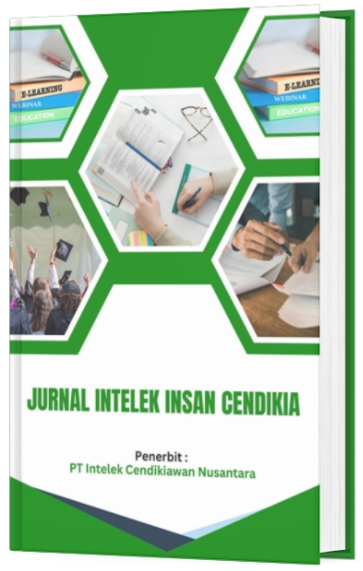TINJAUAN KEBIJAKAN FISKAL DAN PERTUMBUHAN EKONOMI
Keywords:
kebijakan fiskal, pertumbuhan ekonomi, infrastrukturAbstract
Penelitian ini bertujuan menganalisis pengaruh kebijakan fiskal terhadap pertumbuhan ekonomi Indonesia, dengan fokus pada pengeluaran infrastruktur, reformasi perpajakan, dan pengelolaan defisit anggaran selama periode 2020–2023. Metode penelitian menggunakan pendekatan deskriptif kuantitatif dengan data sekunder dari sumber resmi seperti Badan Pusat Statistik (BPS), Kementerian Keuangan, dan Bank Dunia. Hasil penelitian menunjukkan bahwa kebijakan fiskal ekspansif melalui alokasi anggaran infrastruktur sebesar Rp392 triliun (2023) berkontribusi pada peningkatan pertumbuhan PDB sebesar 5,31% (2022). Reformasi perpajakan UU HPP 2021 berhasil meningkatkan penerimaan pajak sebesar 31,4% (2022), sementara defisit anggaran berhasil dikurangi dari 6,31% menjadi 2,84% PDB melalui konsolidasi fiskal. Secara praktis, temuan ini merekomendasikan peningkatan efisiensi belanja sosial dan diversifikasi instrumen pembiayaan defisit. Secara teoritis, penelitian ini memperkuat teori Keynesian tentang peran belanja pemerintah dalam stimulasi ekonomi serta konsep tax buoyancy dalam konteks negara berkembang. Implikasi penelitian menekankan pentingnya integrasi kebijakan jangka pendek dan struktural untuk pertumbuhan berkelanjutan.
References
ADB. (2022). Infrastructure Investment and Economic Growth in Southeast Asia. ADB Publishing.
ADB. (2023). Asian Development Outlook 2023: Financing a green and inclusive recovery. https://www.adb.org/publications/asian-development-outlook-2023
Alesina, A., & Ardagna, S. (2010). Large Changes in Fiscal Policy: Taxes versus Spending. Tax Policy and the Economy, 24(1), 35–68.
Alm, J. (2019). Digital Transformation and Taxation: Challenges and Opportunities. National Tax Journal, 72(3463–488). https://doi.org/https://doi.org/10.17310/ntj.2019.3.03
Aschauer, D. A. (1989). Is Public Expenditure Productive? Journal of Monetary Economics, 23(2), 177–200. https://doi.org/https://doi.org/10.1016/0304-3932(89)90047-0
Banerjee, A. V., & Duflo, E. (2011). Poor Economics: A Radical Rethinking of the Way to Fight Global Poverty. PublicAffairs.
Bank Indonesia. (2023). Laporan Perekonomian Indonesia 2023. https://www.bi.go.id
Bappenas. (2023a). Evaluasi Proyek Strategis Nasional 2020–2023. https://www.bappenas.go.id
Bappenas. (2023b). Laporan Evaluasi Belanja Pendidikan dan Kesehatan.
Barro, R. J. (1990). Government Spending in a Simple Model of Endogenous Growth. Journal of Political Economy, 98(5), S103–S125.
Bird, R. M. (2014). Taxation and Development: What Have We Learned? (6782; World Bank Policy Research Working Pape).
BKPM. (2023). Laporan Realisasi Investasi 2022. https://www.bkpm.go.id
BPS. (2023a). Ekonomi Indonesia Tahun 2022 Tumbuh 5,31 Persen. https://www.bps.go.id
BPS. (2023b). Laporan PDB Triwulan IV 2022. https://www.bps.go.id
BPS. (2023c). Statistik Kesehatan 2023. https://www.bps.go.id
Creswell, J. W. (2014). Research design: Qualitative, quantitative, and mixed methods approaches (4th ed.). SAGE Publications.
DJP. (2023). Laporan Realisasi Penerimaan Pajak 2022.
Easterly, W. (1999). When Is Fiscal Adjustment an Illusion? Economic Policy, 14(28), 57–86.
Ebrill, L. (2001). The Modern VAT. International Monetary Fund.
Eichengreen, B. (2003). Original Sin: The Pain, the Mystery, and the Road to Redemption (10036; NBER Working Paper).
Feldstein, M. (1986). The Budget Deficit and the Dollar. NBER Macroeconomics Annual, 1, 355–392.
Fink, A. (2019). Conducting Research Literature Reviews: From the Internet to Paper (5th ed.). SAGE Publications.
Flyvbjerg, B. (2014). What You Should Know About Megaprojects and Why: An Overview. Project Management Journal, 45(2), 6–19. https://doi.org/https://doi.org/10.1002/pmj.21409
Gupta, S., Verhoeven, M., & Tiongson, E. R. (2002). The Effectiveness of Government Spending on Education and Health Care in Developing and Transition Economies. European Journal of Political Economy, 18(4), 717–737. https://doi.org/https://doi.org/10.1016/S0176-2680(02)00116-7
Hakim, A. (2020). Evaluasi Dampak Tax Amnesty terhadap Kepatuhan Pajak di Indonesia. Jurnal Ekonomi Indonesia, 12(2), 45–60.
Hanushek, E. A. (2016). Will More Higher Education Improve Economic Growth? Oxford Review of Economic Policy, 32(4), 538–552. https://doi.org/https://doi.org/10.1093/oxrep/grw025
IMF. (2023). Indonesia: Fiscal Transparency Evaluation (23/123; IMF Country Report).
Kemenkes. (2023). Laporan Alokasi Anggaran Jaminan Kesehatan Nasional (JKN) Tahun 2023.
Kemenkeu. (2023). Laporan Realisasi APBN 2023. https://www.kemenkeu.go.id
Keynes, J. M. (1936). The General Theory of Employment, Interest, and Money. Palgrave Macmillan.
Laffer, A. B. (2024). The Laffer Curve: Past, Present, and Future. Heritage Foundation Report.
Neuman, W. L. (2014). Social Research Methods: Qualitative and Quantitative Approaches (7th ed.). Pearson.
OECD. (2022). Tax Administration: Digital Transformation and Compliance Costs. OECD Publishing. https://www.oecd.org/tax/
OECD. (2023a). BEPS Action Plan: Progress Report. OECD Publishing.
OECD. (2023b). PISA 2022 Results: Indonesia. https://www.oecd.org/pisa
Parry, I. (2021). Carbon Taxation in Indonesia: Prospects and Challenges (World Bank Working Paper).
Pradhan, R. P., Arvin, M. B., Nair, M., & Hall, J. H. (2020). Economic growth and fiscal policies: Lessons from emerging markets. Economic Analysis and Policy, 65, 102–118. https://doi.org/https://doi.org/10.1016/j.eap.2020.01.004
Pritchett, L. (2015). The limits of bureaucratic reform: Why governments fail to implement effective public spending (401; Center for Global Development Working Paper). https://www.cgdev.org/publication/limits-bureaucratic-reform
Reinert, E. S. (2010). How Rich Countries Got Rich and Why Poor Countries Stay Poor. PublicAffairs.
Reinhart, C. M., & Rogoff, K. S. (2010). Growth in a time of debt. American Economic Review, 100(2), 573–578. https://doi.org/https://doi.org/10.1257/aer.100.2.573
Romer, P. M. (1990). Endogenous Technological Change. Journal of Political Economy, 98(5), S71–S102. https://doi.org/https://doi.org/10.1086/261725
Sargent, T. J., & Wallace, N. (1981). Some Unpleasant Monetarist Arithmetic. Federal Reserve Bank of Minneapolis Quarterly Review, 5(3), 1–17.
Slemrod, J. (1995). What Do Cross-Country Studies Teach About Government Involvement, Prosperity, and Economic Growth? Brookings Papers on Economic Activity, 2, 373–431.
Stiglitz, J. E. (2012). The Price of Inequality: How Today’s Divided Society Endangers Our Future. W.W. Norton & Company.
UNCTAD. (2023). Transfer Pricing and Tax Avoidance in Developing Countries.
World Bank. (2023a). Indonesia Economic Prospects: Fiscal Policy and Inclusive Growth. World Bank Group.
World Bank. (2023b). Indonesia Health Facility Distribution Report. https://www.worldbank.org
Yulianto., H. (2016). Statistik 1. Lembaga Ladang Kata.
Yulianto, H. (2016a). Studi Kausalitas Jumlah Uang Beredar, Suku Bunga dan Pertumbuhan Ekonomi. Equity, 2(11), 92–108.
Yulianto, H. (2016b, December 25). Arsitektur Inklusi Keuangan. Sulsel.Pojoksatu. http://sulsel.pojoksatu.id/read/2016/12/25/arsitektur-inklusi-keuangan/
Yulianto, H. (2020). Overview Skenario Kebijakan Pemulihan Ekonomi Nasional: Masa Pandemi Covid-19 Dan New Normal. In Problematika Ekonomi Dan Pandemi Covid-19 (pp. 2–9).
Yulianto, H., & Iryani. (2020). Analisis Penyerapan Tenaga Kerja Berbasis Digital Terhadap Kemiskinan. Seminar Nasional FDI Sulsel, 1–7.
Yulianto, H., & Iryani. (2021). PEN Program on the Indonesian Economy. Seminar Nasional Manajemen, Ekonomi, Dan Akuntansi Universitas Bangka Belitung Ke IV (SEMEABB IV/ SEMEABB 2021), 61–65.
Yulianto, H., & Yahya, S. D. (2018). Manajemen Transportasi Publik Perkotaan. LPPM STIE YPUP Makassar.
Downloads
Published
Issue
Section
License
Copyright (c) 2025 Sevianti Sevianti, Darmawati Darmawati, Ahlal Badran Arkaan, Harry Yulianto

This work is licensed under a Creative Commons Attribution-ShareAlike 4.0 International License.













